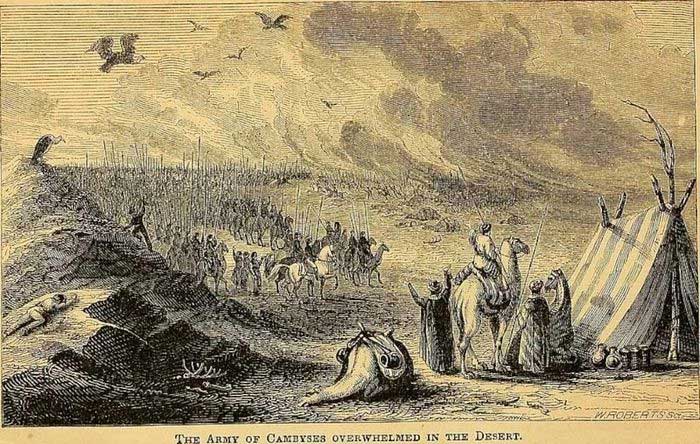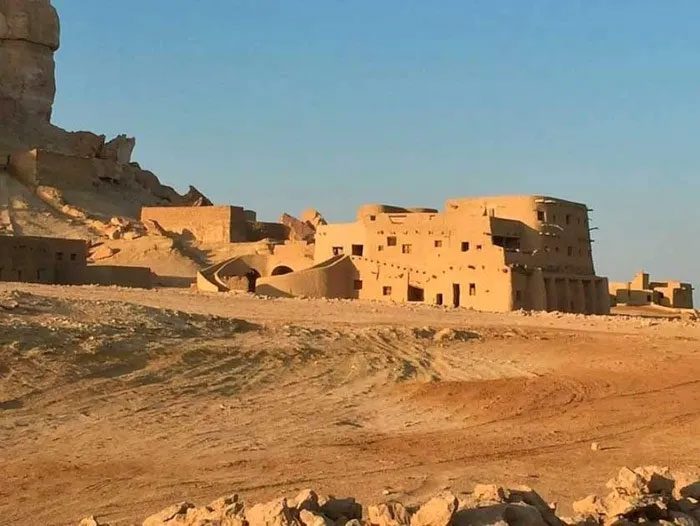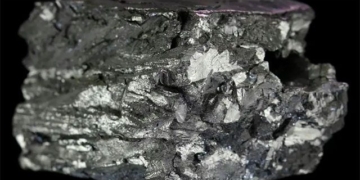In world history, there has been a bizarre event when an army of 50,000 men suddenly vanished, with no survivors, and no corpses ever found. For thousands of years, no one has been able to explain the truth behind this mystery.
More than 2,500 years ago, King Cambyses II, who ruled the entire Persian Empire and was the son of the legendary Cyrus the Great, sent an army of 50,000 men to attack an adversary. What happened next became one of the greatest mysteries of the ancient world: the entire army disappeared and has never been seen since.
Some believe this story is merely fiction. However, archaeologists have long been searching for answers about what truly happened to the 50,000 warriors sent by Cambyses.
The Cambyses Army
In 524 BC, Cambyses II dispatched his army on a mission to target and enslave the inhabitants of the Temple of Amun located in the Siwa Oasis, referred to as “the Ammonians.” The Persian king sought to reinforce his claim to Egypt in order to secure his position as Pharaoh legally.
Initially, Cambyses made a polite request, but the powerful priests of the Temple of Amun were unwilling to submit, which infuriated him. To resolve the situation and quell their resistance, Cambyses sent his men to burn down their great temple of Zeus-Amun.
The large army embarked on the mission and marched across the Sahara towards the Siwa Oasis, deep within the desert. They aimed to teach the rebellious priests a lesson to assert their authority.
After a long 7 days in the desert, the army reached the oasis, which historians believe was then called “El-Kharga”. However, they never arrived: the 50,000-strong army vanished while marching toward their destination.

Cambyses’ army overpowered in the desert. (Image: Internet).
This could have been nothing short of a disaster for Cambyses. However, it had no aftershocks on his reign and power, leading some to question whether the event was real. Yet, since no trace of the soldiers was found, the truth of the story became a point of debate, and the search for the soldiers ceased.
What Could Have Happened to Them?
While we cannot be certain about the army’s fate, ancient explanations provide some clues. According to Herodotus, an ancient Greek historian, a fierce and deadly wind arose from the south when the army had traversed nearly half the desert, engulfing them in a massive sandstorm.
The intensity of the sandstorm was so great that the entire army of 50,000 warriors was covered by it, and they had no time to react or flee. Despite being a large contingent, they stood no chance against Mother Nature.
The power of this natural weather phenomenon was such that the whole army disappeared beneath the sand and was never found again. The traces of these men were lost, and no news about them reached anyone, whether Egyptians, Persians, or Greeks.
As their traces disappeared entirely, it wasn’t long before they vanished from memory. The mission the army undertook was quite challenging, and they failed to recognize the potential dangers they might face in the natural environment.
Of course, Herodotus himself was guessing and provided the most plausible explanation he had. Yet, given the daunting environment, the army could have easily gotten lost and vanished in the vast Sahara Desert.
Unraveling the Mystery
Archaeologists have indeed uncovered some evidence shedding light on the tragedy that befell Cambyses’ large army. While conducting research near the area believed to be where they vanished, researchers found several artifacts, including human remains alongside other items like a half-buried vase.
Another significant discovery involved a large boulder that may have been used as shelter against the sandstorm. Several ancient wartime items were located by metal detectors, such as numerous arrowheads and bronze daggers, all dating back to the time of Cambyses. Could these be the remnants of the army, all that remains in the desert?

Siwa Oasis. (Image: Internet).
The tragic fate of the army raises questions about how nature could act as a catalyst and alter human destiny. The loss of Cambyses’ Army, considered one of the greatest archaeological mysteries of all time, was resolved when it was found that the cause of the disappearance of 50,000 warriors was indeed a sandstorm. Departing from the notion of a mythical army, scientists felt confident based on their findings to announce that they had decoded this mystery in 1996.
Their conclusion matched that of Herodotus: the army was indeed swallowed by a sandstorm during their journey. Now, nothing remains of the 50,000 who set out for the Siwa Oasis.
Although Cambyses was significantly successful as a king, controlling nearly the entire region of Egypt, the sudden disappearance of his entire army was undoubtedly a major setback. It serves as a testament that no matter how powerful he was, he could not overcome this disaster.
The sudden vanishing of his colossal army amidst the desert has piqued the curiosity of archaeologists for decades. Recent research findings have revealed that the army, comprising thousands of men, faced a natural obstacle in the form of a massive sandstorm. They could not complete their journey as they were buried by sand along the way.


















































